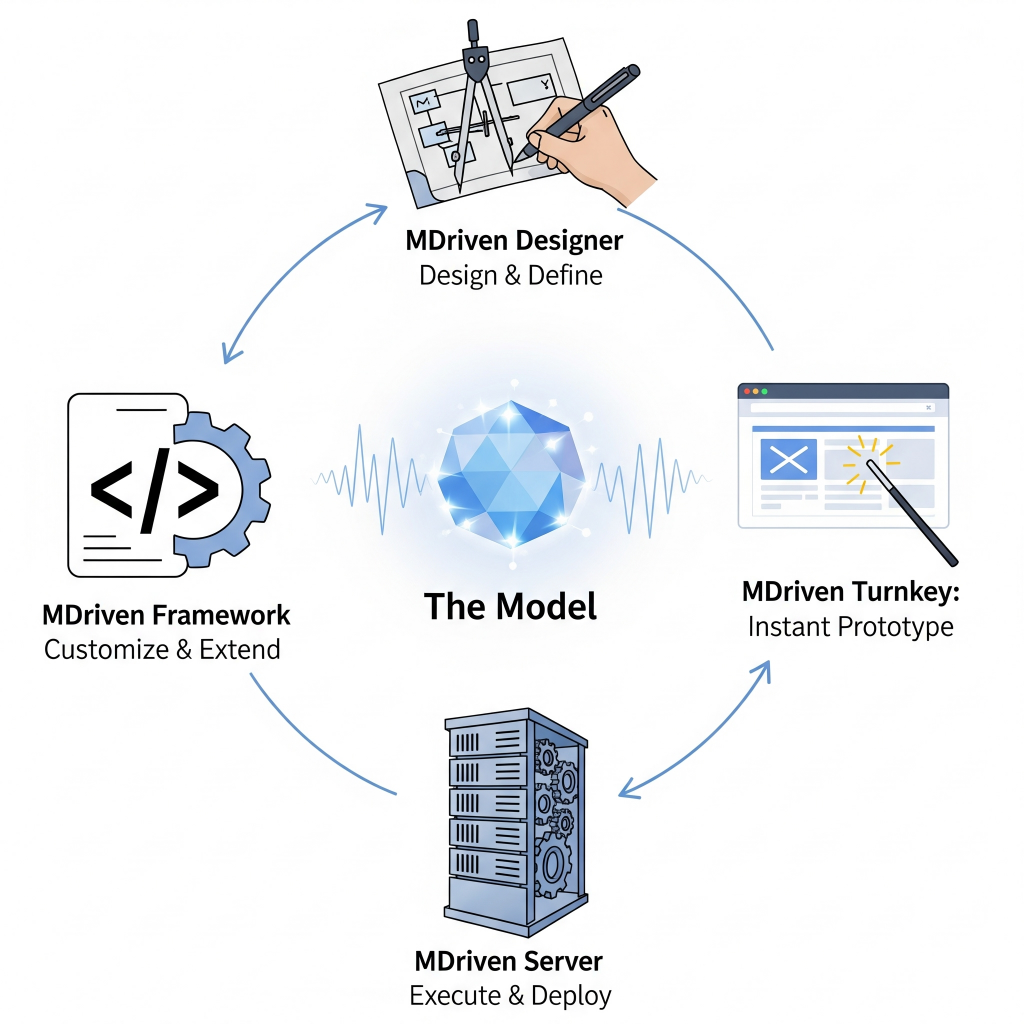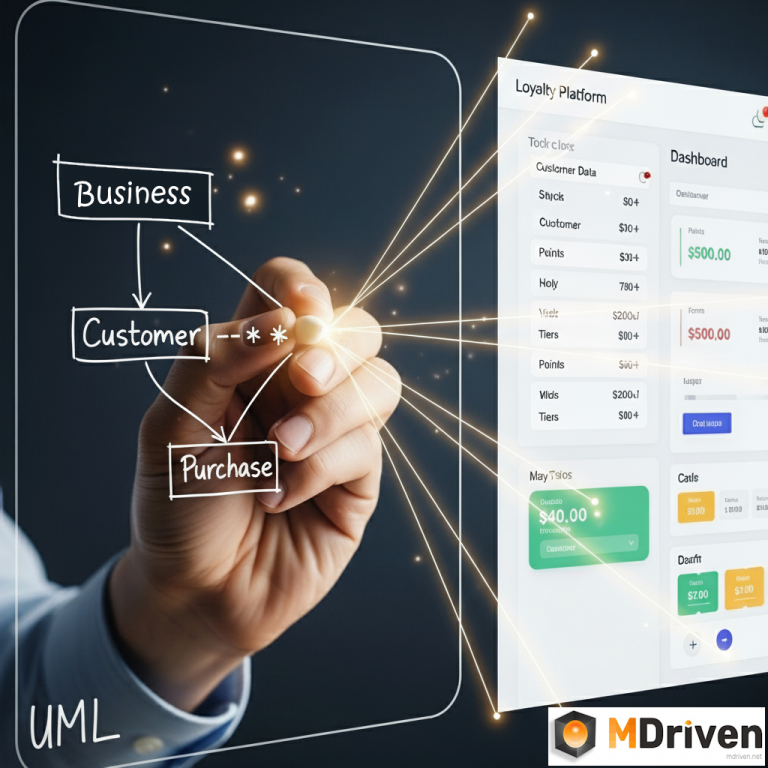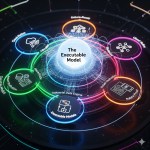Your Business Logic is Your Application: A Guide to MDriven
For years, we accepted a broken process in software development: escalating costs, delayed deliveries, and a chasm between business needs and what gets built. We attempted to patch this with better processes, but the core problem remains: our business logic is trapped in brittle, hard-to-change code.
True breakthroughs don’t optimize; they reinvent. What if your application’s core wasn’t code at all, but a living, executable model that evolves with your business? This is the revolution we’ve built with MDriven. As our founder, Hans Karlsen, puts it: ‘If the model is precise, why shouldn’t it be the application?’
The MDriven Ecosystem: A Unified Platform
“MDriven isn’t a single tool; it’s a cohesive ecosystem where every part works in sync, guided by your model.”
- MDriven Designer: The command center. This is where you and your business analysts visually build your application’s blueprint using UML. You design the data structures, workflows, and user interfaces. Changes here reflect everywhere, instantly.
- MDriven Server: The engine. This is the heart of the system. It takes your visual model from the Designer and executes it directly. It manages your database, security, and all the business logic you’ve defined, automatically adapting as your model evolves.
- MDriven Turnkey: The instant application. With the click of a button, Turnkey generates a fully functional web application from your model. It’s perfect for rapid prototyping, internal tools, and getting immediate feedback. You get standard front-ends out of the box, with options for customization.
- MDriven Framework: The power tool for developers. When you need to integrate with legacy systems or write complex, custom C# code, the Framework provides a seamless bridge. It allows you to add a powerful code layer that respects and extends the model, ensuring you are never locked in.

From Idea to Application in Hours: Building a Loyalty Platform
Let’s make this real. Imagine a retail company wants to launch a new customer loyalty platform.
- Modeling the Business (Minutes): A business analyst opens MDriven Designer and drags-and-drops blocks to create classes: Customer, Purchase, and RewardTier. They draw lines to link them: a Customer can have many Purchases.
- Defining the Logic (Plain English): Instead of explaining logic to a developer to be buried in code, the analyst adds rules directly to the model using OCL. To define how points are calculated, they add a derived attribute to Customer: TotalPoints = self.Purchases->sum(Price). To define tiers, they add another: CurrentTier = if self.TotalPoints > 1000 then ‘Gold’ else ‘Silver’ endif. This logic is now visible, verifiable, and live.
- Instant Prototyping (Seconds): They click ‘Run’ in MDriven Turnkey. Instantly, a web application appears. They can create customers, log purchases, and see the TotalPoints and CurrentTier update automatically. They can show this working prototype to stakeholders in the same meeting where the requirements are discussed.
- Scaling and Deployment: Once approved, the model is deployed to the MDriven Server, which handles the production database, user accounts, and security. It can be hosted in the cloud or on-premise.
- The Inevitable Change: A week later, marketing decides to add a ‘Platinum’ tier for customers with over 5000 points. The developer doesn’t need to refactor code or update a database schema. They simply update the OCL rule in the model, and the change is deployed. The agility isn’t theoretical; it’s built-in.
Our Philosophy: The Power of a Living Model
- UML as the Blueprint: We use UML because it’s the global standard for visually modeling systems. It creates a common language that both business analysts and developers understand, eliminating ambiguity.
- OCL for Transparent Logic: Business rules should live in the model, not buried in code. The Object Constraint Language (OCL) allows you to define complex logic declaratively. It’s self-documenting and ensures your rules are never lost in translation.
- AI-Assisted Acceleration: Our model-centric approach makes AI a uniquely powerful partner. Our AI assistant can help you generate initial models from natural language descriptions, create comprehensive test data, and even suggest UI optimizations. As Hans notes, ‘AI struggles to fix bad structure. MDriven ensures your system has a perfect structure from day one, making it the ideal foundation for AI augmentation.





Pingback: MDriven Turns UML Into Executable Models